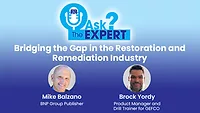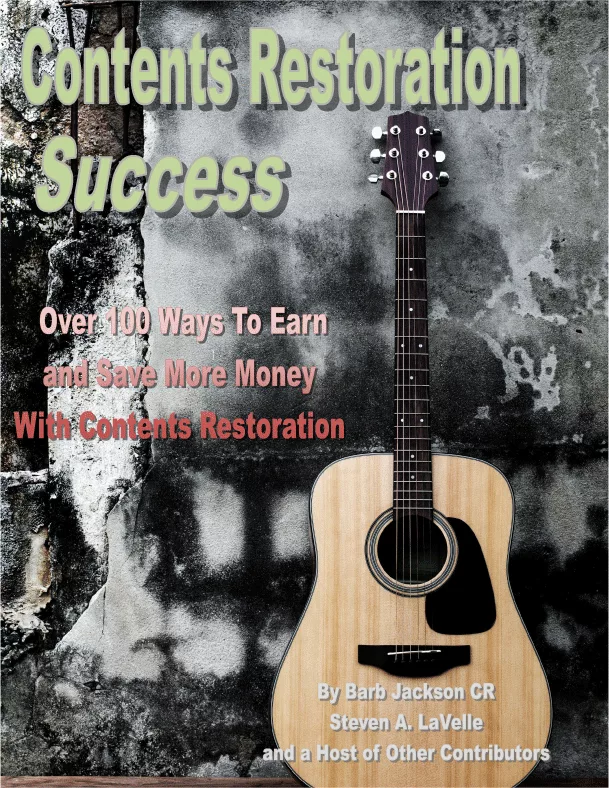Bridging the Gap: Sellable Restoration Businesses and Investors
An Industry Restored

Photo credit: Getty Images
The mergers and acquisitions (M&A) landscape the world over has seen significant shifts over the past five years, and business as usual is looking a little different, even in the restoration space. With M&A a significant contributor to the overall growth of the restoration market, observing the changes as they unfold is exciting and informs our next moves as an industry.
The restoration market of 2021 maintained its unique niche data with statistics and trends directly affected by an aging owner demographic. With 65% of owners falling in the baby boomer category, retirement is front and center for many businesses — big and small.* By 2024, that demographic as a whole will have aged above 60 years. In 2022, the top of the generation has already reached 76, and the time for proper exit planning will soon pass — with it, the opportunity to transfer businesses successfully to new ownership.
The gap between time-to-sell and exit-ready businesses continues to widen, and an astounding 70% of businesses moving to market possess unsellable qualities.* Challenges for businesses already in this state continue to mount, and a collection of unsellable businesses becomes the barrier between M&A momentum in the market. Moreover, generational transfer of businesses is a diminishing game, and no more than 30% of all businesses successfully transfer into the second generation.* Today’s sellers inform industry growth, and a lack of sellable businesses could spin the industry into crisis. But there is good news on the horizon.
Unlocking Opportunity
Working backward from the desired result brings us closer to understanding how to close the gap between sellable businesses and the buyers looking to acquire restoration companies. Unlocking the value of a business begins by understanding what makes it sellable and what opportunities are available in a given area — defined by business size, geographic area, service offerings and other factors compelling to prospective buyers.
Understanding what creates a sellable business allows an owner to evaluate key components of the business now to land in a better place when the time comes to exit. Selling in haste is often a result of the desire for quick retirement, heavy owner burnout or a sudden health need. Waiting for these phases is detrimental to the best business transaction, and steering the ship toward best outcome for the seller is no longer viable. In today’s market, many sellers report that 80% of their wealth is tied up in their business, making exiting well a necessity.*
Unlocking the value of a business begins by understanding what makes it sellable and what opportunities are available in a given area — defined by business size, geographic area, service offerings and other factors compelling to prospective buyers.
Enter the role of mergers and acquisitions in a healthy restoration market. Large industry players are beginning to acquire healthy, sellable businesses — solidifying a merging market and bringing their established reputations, systems and marketing power into newer spaces. Their intent is to acquire the healthy businesses that quickly add to their bottom line, and the businesses left behind are those which have not properly prepared. Private equity groups and new investors are equally as eager to enter the recession-resistant restoration space. In all of this movement, the industry will find balance in healthy businesses and new opportunity available through investment capital.
As the M&A trends of the past two years continue through 2022 and beyond, identifying opportunity is the key to moving the market forward. Private equity and buyers new to the industry were heavy hitters in the 2020 and 2021 markets. While larger companies will continue to see sales price increases, the smaller business sales margins will stabilize, still promising for businesses of all sizes maintaining a sellable state. Optimizing key factors in operations, marketing, online reputation and employee base brings increased potential for prime sale.
Becoming an Exit-Ready Business
New opportunities for acquisitions within the restoration niche come when businesses are primed and ready for sale. The bottom-line look at what makes a business sellable is reliant on more than just numbers. New buyers are compelled by the teams in place, revenue and owner benefit, and overall systems and operations of a business. To answer these challenges, current restoration business owners looking to sell must focus on six key areas of their business to create the compelling, ready-for-exit company that catches the eye of today’s buyers.
- Financials. Examining financials is important, from first glance until signing papers at closing. The closing process can take months in large acquisitions, and maintaining the financial health of the business during that time is often make-or-break for the final sale. Keeping books in the right order and using proper accounting methods to give a clear picture of where the business has been, where it is now, and where it is headed breeds trust and transparency important to your best sale.
- Growth potential. Identifying untapped areas for growth and expansion profiles the strength of the business, not its weakness as some believe. A business without potential is unsellable, and a business with easily identified earning opportunities, untapped though they may be, appeals to a future-thinking buyer who wants to see where your business could go.
- Diversified revenue streams. One big client does not a successful business make. Restoration is about possibility, and maintaining a heterogenous mix of services, clients and referral sources shows the sustainability and true recession-resistant nature of an individual company within the broader industry.
- Sales and marketing plan. Incoming buyers sit up and take notice when a company is prepared with solid sales and marketing strategies. Keeping ahead of whatever the market brings requires thinking to the future and managing growth through targeted, properly scaled marketing efforts.
- Net Promoter Score. Referral sources are an oft-undervalued resource to companies, and understanding customer loyalty and the likelihood of receiving referrals is vital to continued business. Executing proper referral management is treated like a tertiary measure, but its long-lasting value is vital.
- Team management. A well-stacked bench is the key to shoring up any qualms about continued operations a buyer may have. Proving less owner involvement in day-to-day operations makes a business appeal to large investors looking to enter the business differently than the current owner’s status.
Understanding how to enter the stage set by the new dream buyers in restoration mergers and acquisitions brings sellers into the arena and keeps the market healthy. As an industry on the precipice of continued change, maintaining health is the end goal for all. Seller activity remains promising, and owners who have prepared their companies for an exit will continue reaping the rewards in our changing restoration space.
*Source: Enclosed statistics come from research conducted by the International Business Brokers Association (IBBA), ibba.org.
Looking for a reprint of this article?
From high-res PDFs to custom plaques, order your copy today!







